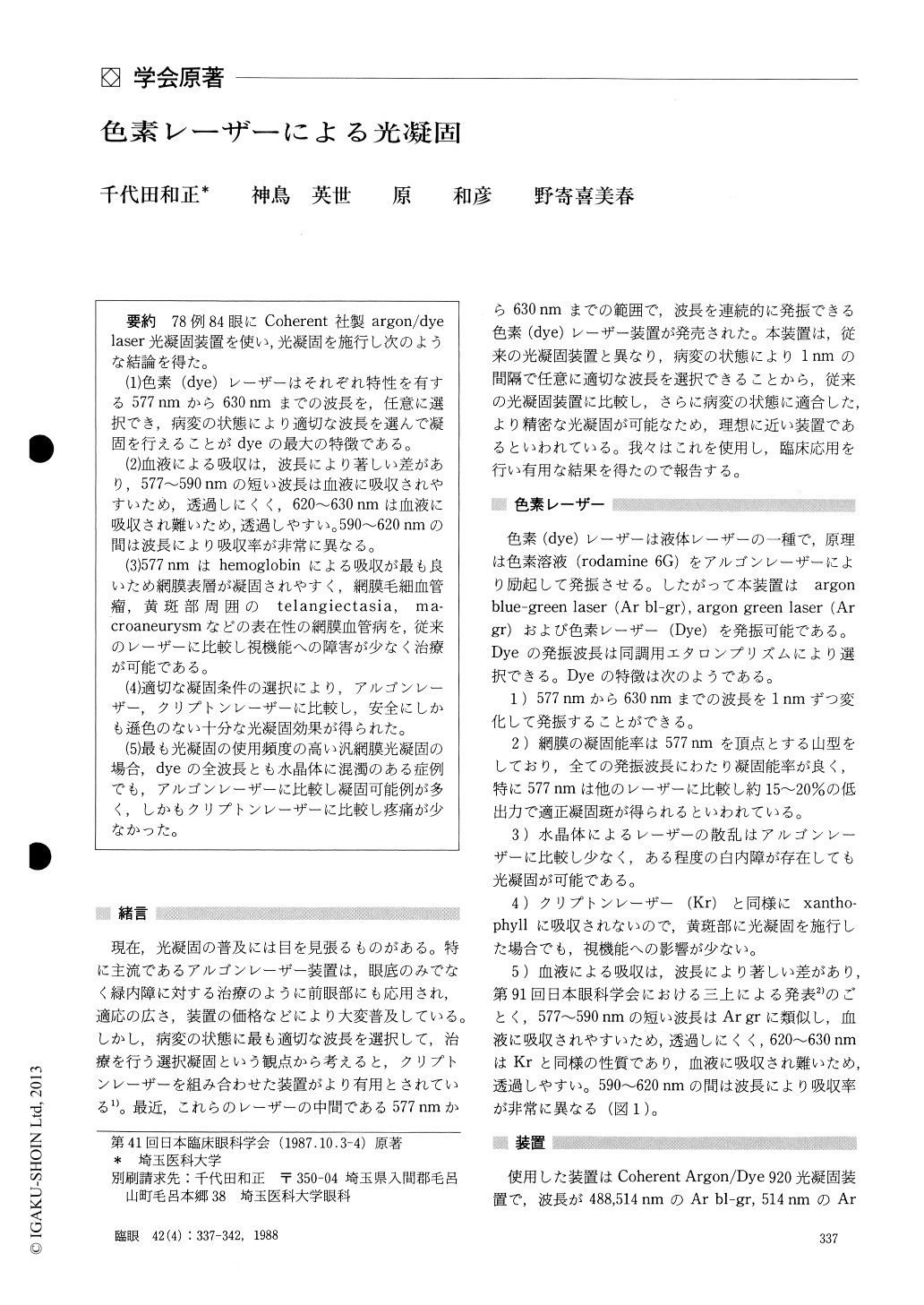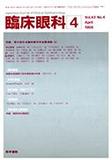Japanese
English
- 有料閲覧
- Abstract 文献概要
- 1ページ目 Look Inside
78例84眼にCoherent社製argon/dyelaser光凝固装置を使い,光凝固を施行し次のような結論を得た.
(1)色素(dye)レーザーはそれぞれ特性を有する577nmから630nmまでの波長を,任意に選択でき,病変の状態により適切な波長を選んで凝固を行えることがdyeの最大の特徴である.
(2)血液による吸収は,波長により著しい差があり,577〜590nmの短い波長は血液に吸収されやすいため,透過しにくく,620〜630nmは血液に吸収され難いため透過しやすい.590〜620nmの間は波長により吸収率が非常に異なる.
(3)577nmはhemoglobinによる吸収が最も良いため網膜表層が凝固されやすく,網膜毛細血管瘤,黄斑部周囲のtelangiectasia, ma-croaneurysmなどの表在性の網膜血管病を,従来のレーザーに比較し視機能への障害が少なく治療が可能である.
(4)適切な凝固条件の選択により,アルゴンレーザー,クリプトンレーザーに比較し,安全にしかも遜色のない十分な光凝固効果が得られた.
(5)最も光凝固の使用頻度の高い汎網膜光凝固の場合,dyeの全波長とも水晶体に混濁のある症例でも,アルゴンレーザーに比較し凝固可能例が多く,しかもクリプトンレーザーに比較し疼痛が少なかった.
We treated 84 eyes, 81 patients, with the dye laser (Coherent Argon/dye laser system 920). The series included diabetc retinopathy, branch retinal vein occlusion, retinal tear, central serous chorio-retinopathy, senile disciform macular degeneration, and Eales' disease. Through appropriate selection of wavelength and power setting for each eye, we could induce beneficial effects that are comparable or superior to the conventional argon or krypton laser photocoagulation.
We mainly used wavelength of 577nm to treat retinal vascular lesions, including capillary aneu-rysms, parafoveal telangiectasis, and macroaneu-rysms. We employed wavelengths of 610 and 630 nm for panretinal photocoagulation. The coagula-tion effects were similar to krypton but incurred lesser pain to the patient.
Our findigns show that the dye laser promises to be of considerable clinical value as it allows greater specificity in its effect as compared with the argon and krypton lasers.
Rinsho Ganka (Jpn J Clin Ophthalmol) 42(4) : 337-342, 1988

Copyright © 1988, Igaku-Shoin Ltd. All rights reserved.


